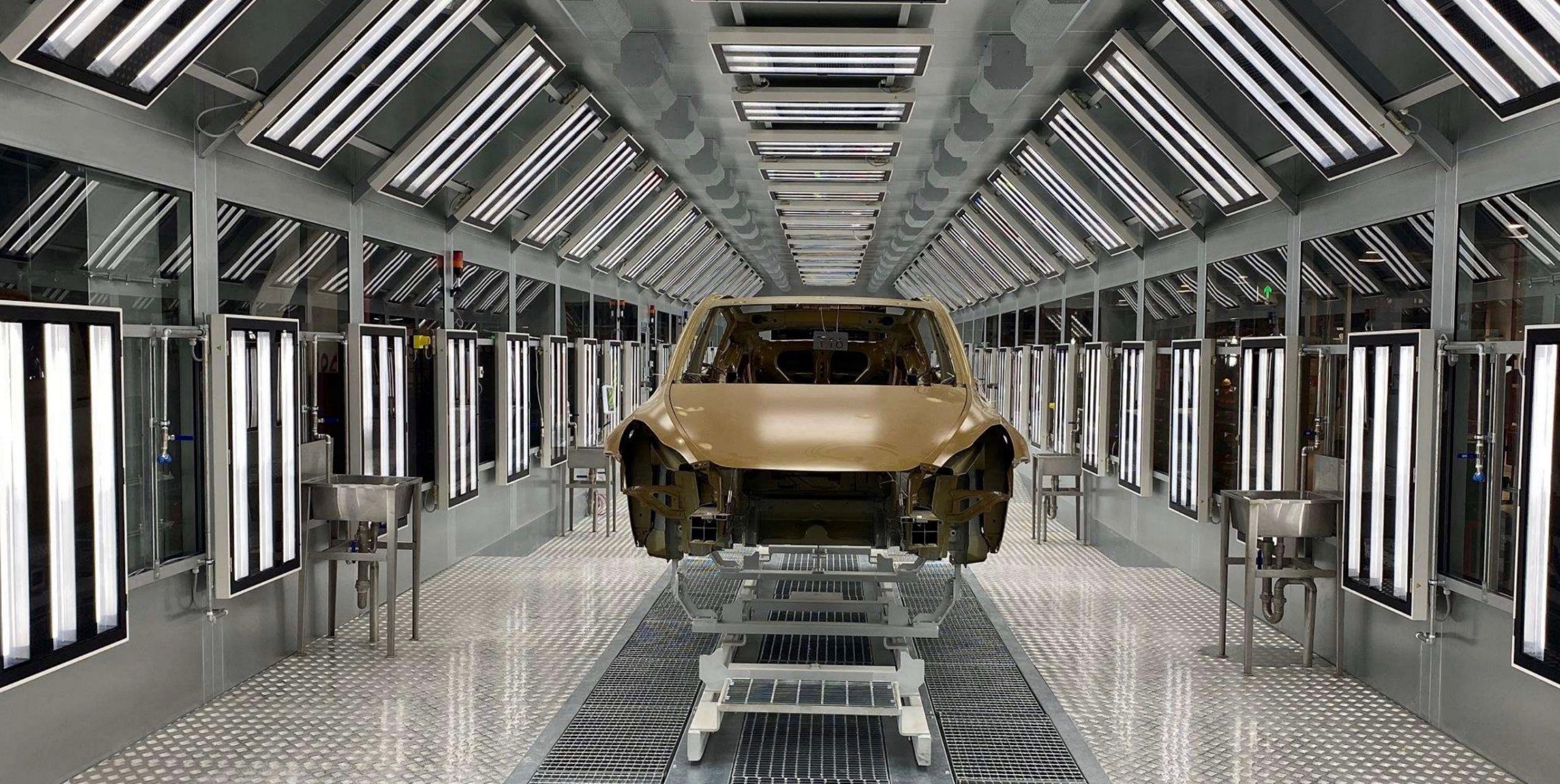Tesla’s (NASDAQ:TSLA) third-quarter earnings call comes on the heels of an impressive quarter that saw the electric car maker posting $8.771 billion in revenue and $809M GAAP operating income, beating Wall Street’s estimates once more. With these results, Tesla has now posted five consecutive profitable quarters.
As revealed in the company’s Q3 2020 Update Letter, Tesla currently sits on $5.9 billion in cash. This is despite the company’s simultaneous construction of Gigafactory Shanghai, Gigafactory Berlin, and Gigafactory Texas. Impressively enough, Model 3 and Model Y production have reached a run-rate of 500,000 vehicles per year at the Fremont factory. This, together with the facility’s capability to produce 90,000 Model S and Model X annually, as well as Gigafactory Shanghai’s current 250,000-per-year capacity, allows Tesla to take a definitive step towards a run-rate of 1 million cars per year.
For today’s earnings call, Tesla executives are expected to address questions surrounding the company’s plans for the coming quarters, particularly its battery cell production strategy. Updates on future projects such as the Cybertruck, Semi, and Roadster may also be mentioned, as well as more details on the third quarter’s surprising Tesla Energy results.
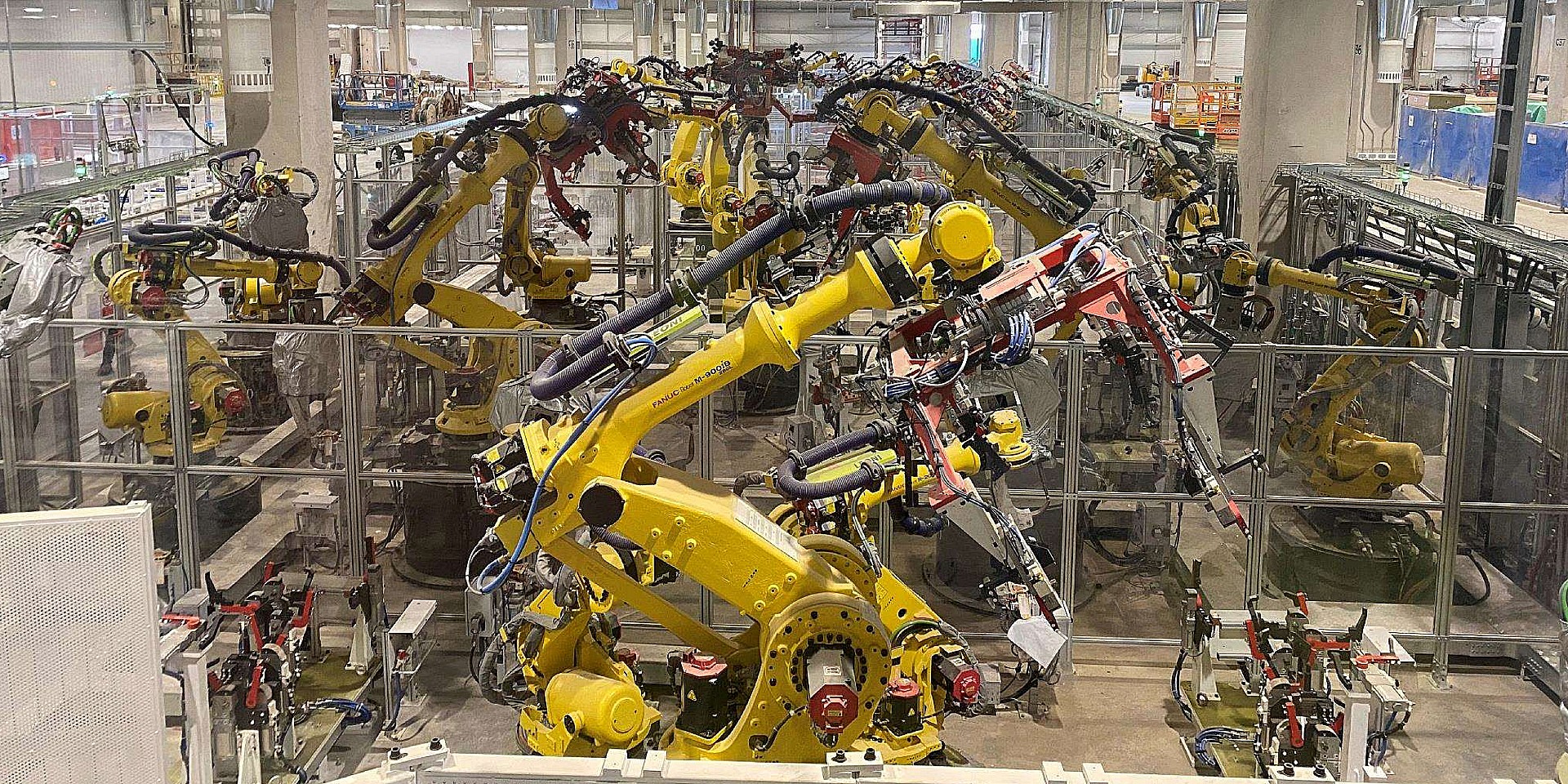
The following are live updates from Tesla’s Q3 2020 earnings call. I will be updating this article in real-time, so please keep refreshing the page to view the latest updates on this story. The first entry starts at the bottom of the page.
15:35 PT: And that’s it for the Q3 2020 earnings call! Thanks so much for staying with us for yet another live blog. We will see you in the next one.
15:34 PT: Final question from Philippe Houchois from Jefferies, who asks about Tesla’s business model for stationary storage. Johnson notes that Tesla is already seeing how energy prices are already seeing benefits from products like the Megapack and Powerwall. Using the hardware and software platform in the form of Autobidder, Tesla Energy has tons of potential.
The analyst also asks about Tesla’s skateboard design, which Musk confirmed will be obsolete in the long term. Musk notes that Tesla is looking to make its vehicles kind of like the way a toy car is made, with large casts and few parts. Using batteries as part of the vehicle’s structure is used in aircraft and rockets, so this approach would likely work for cars too. With such a strategy, Tesla is literally borrowing from orbital-class rocket design philosophy.
“You wouldn’t want to put a box in a box,” Musk noted. He did state that the transition away from the skateboard design won’t happen overnight, but it is bound to happen.
15:30 PT: Ben Kallo of Baird asks about OEMs and how they can get their act together. Elon notes that there will definitely be other car companies even after the EV age. He notes that Tesla designs and builds so much more of its cars than traditional OEMs. “It’s not very adventurous, and all the parts end up looking the same since they go to the same suppliers,” he said. “We’re probably an order of magnitude more vertically-integrated than other companies,” he adds.
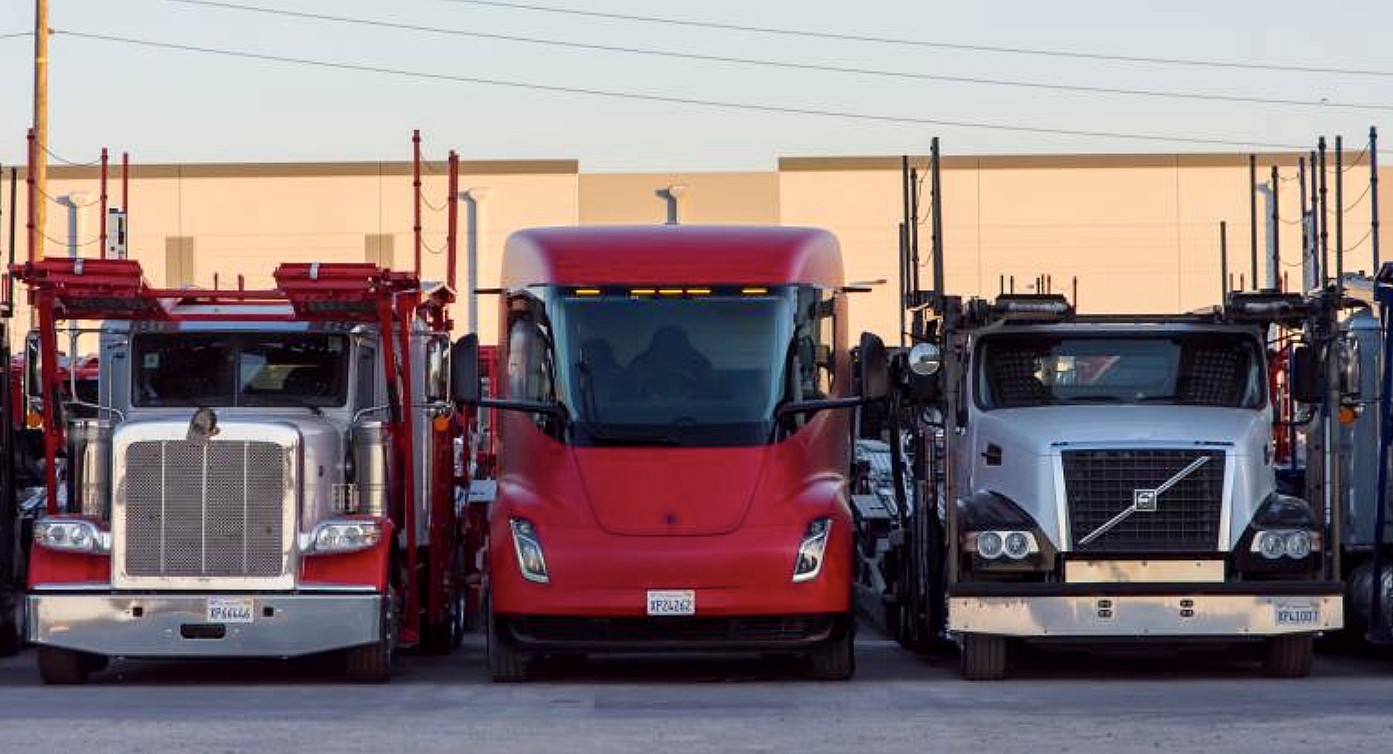
Tesla is working on several parties to ensure that the Semi will have a legitimate charging infrastructure on the vehicle. “We’re not working in isolation,” Guillen noted.
Musk adds that the Semi consumes about 5-6x the cells of conventional cars. “We need to solve cell constraints,” the CEO states. When asked if the Semi and autonomy could be a material business, Musk stated that there is no doubt. Guillen added that the tech that Tesla is putting on the Semi is identical to the tech the company is putting on its other vehicles.
As a follow-up, Levy asked about Tesla’s strategy with pricing, especially with regards to Berlin-made vehicles. Kirkhorn explains that this is affected by different factors, though Tesla is trying to move production higher to optimize pricing.
15:20 PT: Pierre Ferragu of New Street Research asks about the Cybertruck and its ramp. Musk notes that he and the Tesla team are working hard on making sure that the Cybertruck will be better than the prototype that was unveiled last year. “We want the car we deliver to be better than the car we unveiled.” Musk notes that there are a “lot of small improvements” that have been made to the vehicle, making it better than its already-impressive prototype. “I think it’s going to be better than what we showed. It will be made in Austin,” he added.
Musk reiterates that the Cybertruck’s hard exoskeleton will likely present some challenges with the vehicle’s manufacturing. “But nevertheless, “if all goes well, we can do some Cybertruck deliveries towards the end of next year.” Musk predicts lots of deliveries in 2022 and the year after.
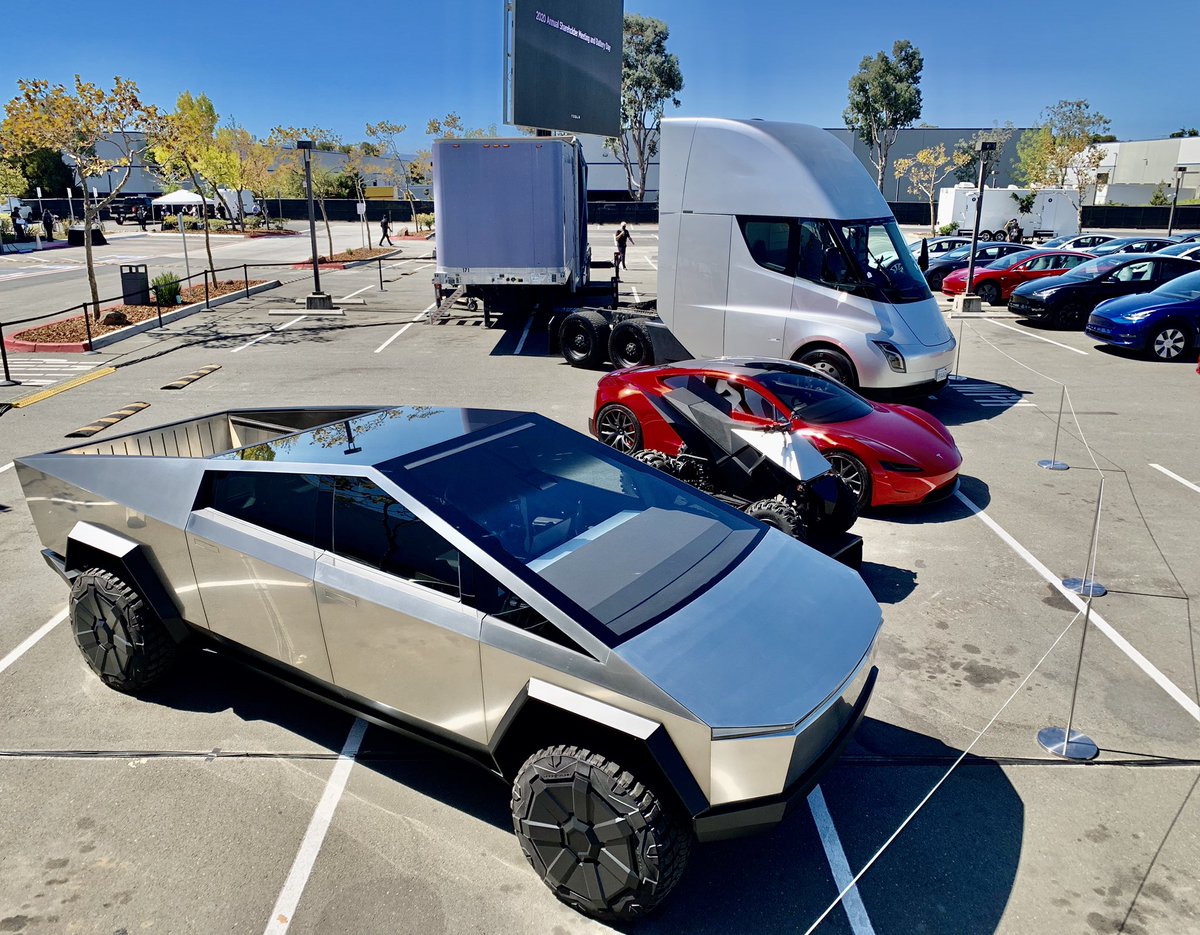
15:15 PT: Colin Rusch of Oppenheimer asks about Tesla’s processes and operations/equipment that are coming in-house. Musk notes that Tesla is “absurdly vertically integrated.” Tesla literally designs the machine, then the company makes the machine. “We made the machine that made the machine that made the machine. We’d like to outsource less,” Musk remarked. “This makes it quite difficult to copy Tesla,” he added. Musk admits that he’s not sure if insane vertical integration is a smart move, but so far, it appears that it is.
Musk is then asked about Tesla’s balance sheet, and how the company is looking to operate in the near future. “We’re trying to spend money at the fastest rate without wasting any of it,” Musk noted.
15:10 PT: Analyst questions begin. Wolfe Research is up first, asking about the targets that were announced during Battery Day. Elon noted that it’s difficult to predict Tesla’s actual output, but 20 million vehicles is a good number, representing 1% of the vehicles that are produced this year. Tesla has a mission to accelerate the advent of sustainability after all, and it needs volume to do that.
When asked about Tesla’s cell production, Musk noted that Tesla could and will change all aspects of the company’s battery cells. “We will change all aspects of the cell,” he said. Tesla will be exploring varying chemistries for its batteries over time. This is classic Tesla, in a way, as the electric car maker is still showing its tendency to continuously innovate.
15:05 PT: Elon highlights why making Tesla’s cars affordable is pivotal. “All of these margins will look comically small when you factor in Autonomy,” Musk said. Adding to the CEO’s statement, Kirkhorn stated that Tesla is moving full speed ahead with as much volume as possible. He adds that Tesla has grown volume and margins even with all the price reductions of Tesla’s vehicle lineup. In addition to reducing costs, the cars get better, and this becomes a reason for more consumers to purchase the company’s cars.
15:00 PT: A question from an institutional investor is brought up about Tesla’s HVAC plan, especially in light of the Model Y’s heat pump. Drew Baglino notes that the Model Y’s heat pump does provide Tesla with some background in this sense, and Elon Musk noted that the company has tech that should allow for home products to be developed.
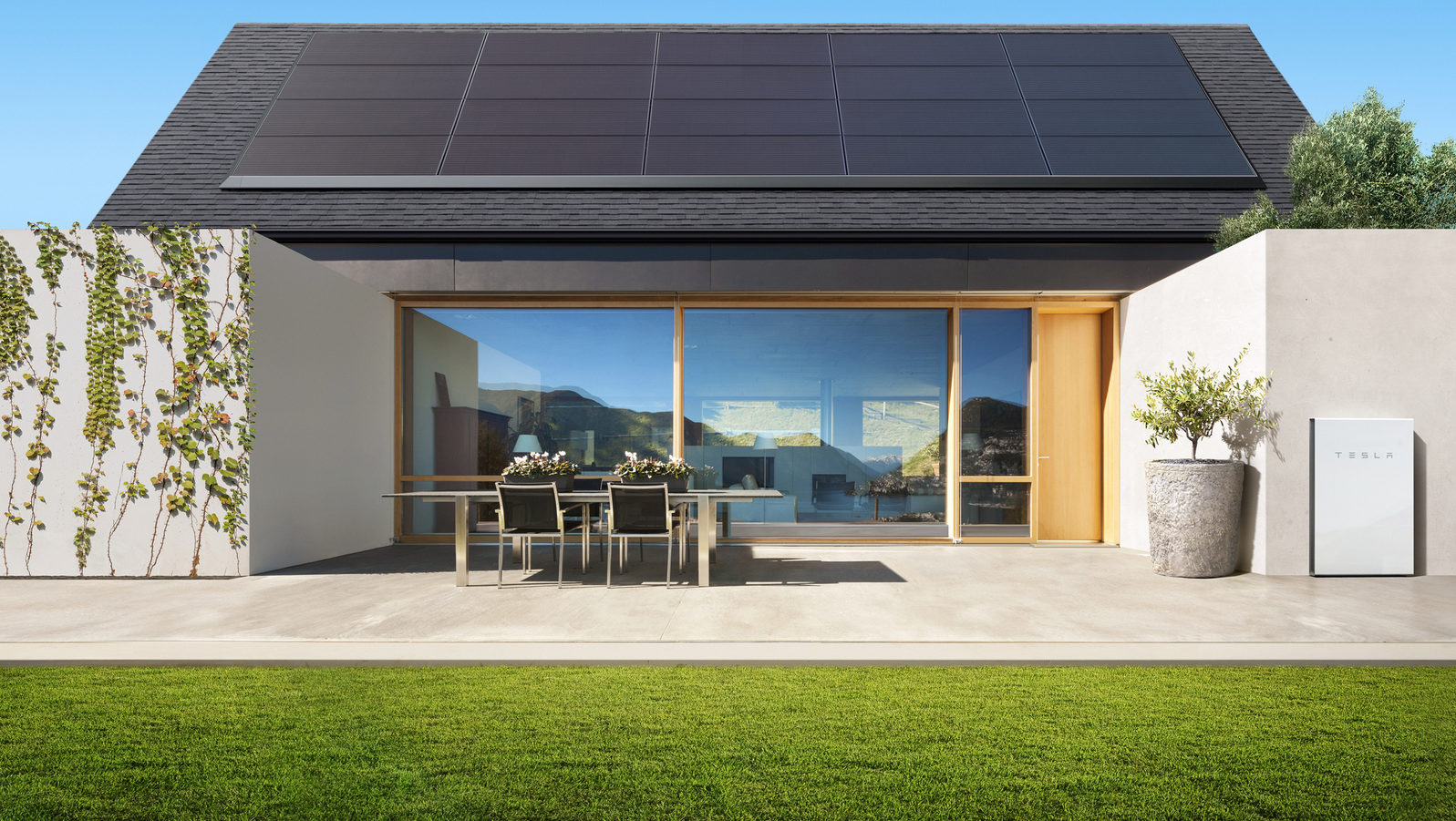
14:58 PT: Shareholder questions begin with a question about the company’s 4680 cells and if they will be produced at the same time as vehicle ramp in Berlin, which Drew Baglino confirms will indeed be the case. As for the idea of FSD being carried over from one vehicle to the next, Elon Musk noted that Tesla will “give it some thought.”
An inquiry about Solar Roof installation constraints was also asked. According to Johnson, the main constraint today lies in the installers themselves. It is pertinent for Tesla to ensure that the Solar Roof is easy to install, and so far, the response from third-party installers have been positive. Elon Musk notes that Solar Roof’s true potential would likely be very evident next year.
In response to a question about the idea of one of Tesla’s businesses spinning off into its own company, Musk discusses how Tesla is essentially a series of startups. “Every major product line is a startup. Every big new plant is a startup. And frankly, sometimes we have to learn a lesson a few times before it sinks in,” Musk remarked. He also noted that “Tesla is not dependent on enterprise software,” implying that Tesla develops all of its operational software internally.
No plans to spin anything out yet though. “It just adds complexity,” Musk said.
14:50 PT: RJ Johnson of Tesla Energy takes the stage. He discusses how Tesla Energy is ramping. “We have more demand than supply through 2021,” he said. Megapack is seeing more demand over the following year. He notes that as costs go lower, sustainable technologies are poised to replace fossil fuel-powered solutions. Other Tesla Energy products such as Autobidder and Powerwall continue to find more adoption as well.
Solar Roof is exciting as the company is gaining more experience in installing the product quickly. Solar Roof installation’s record now stands at 1.5 days.
14:45 PT: To conclude, Musk thanks Tesla’s employees and suppliers. He also extends thanks to investors who have stuck with the company through thick and thin. “I’ve never felt more optimistic about Tesla than I do today,” Musk said.
Zach Kirkhorn takes the stage. He mentions how Tesla now has five profitable quarter. The company’s regulatory credit sales continue to be strong. And despite expenses being higher due to Elon Musk’s payout from his compensation plan, the company was able to keep its numbers strong just the same. Manufacturing and operational costs continue to decrease, as per the CFO.
14:41 PT: The CEO also highlights that the Autopilot rewrite is a generalized approach to FSD, meaning that there are no specialized sensors needed for the vehicles to operate themselves.
In terms of capacity, Elon mentions the expansion of Gigafactory Shanghai, Gigafactory Berlin, and Gigafactory Texas. “We’re making progress on three major factories,” he said, adding that “always impressed by how much the Tesla China team makes.” Musk also notes that Giga Berlin, due to the ramp of new technology, the production of the facility will start slow, and then ramp to greater outputs over time. Giga Berlin could take about 12-24 months to reach full production capacity.
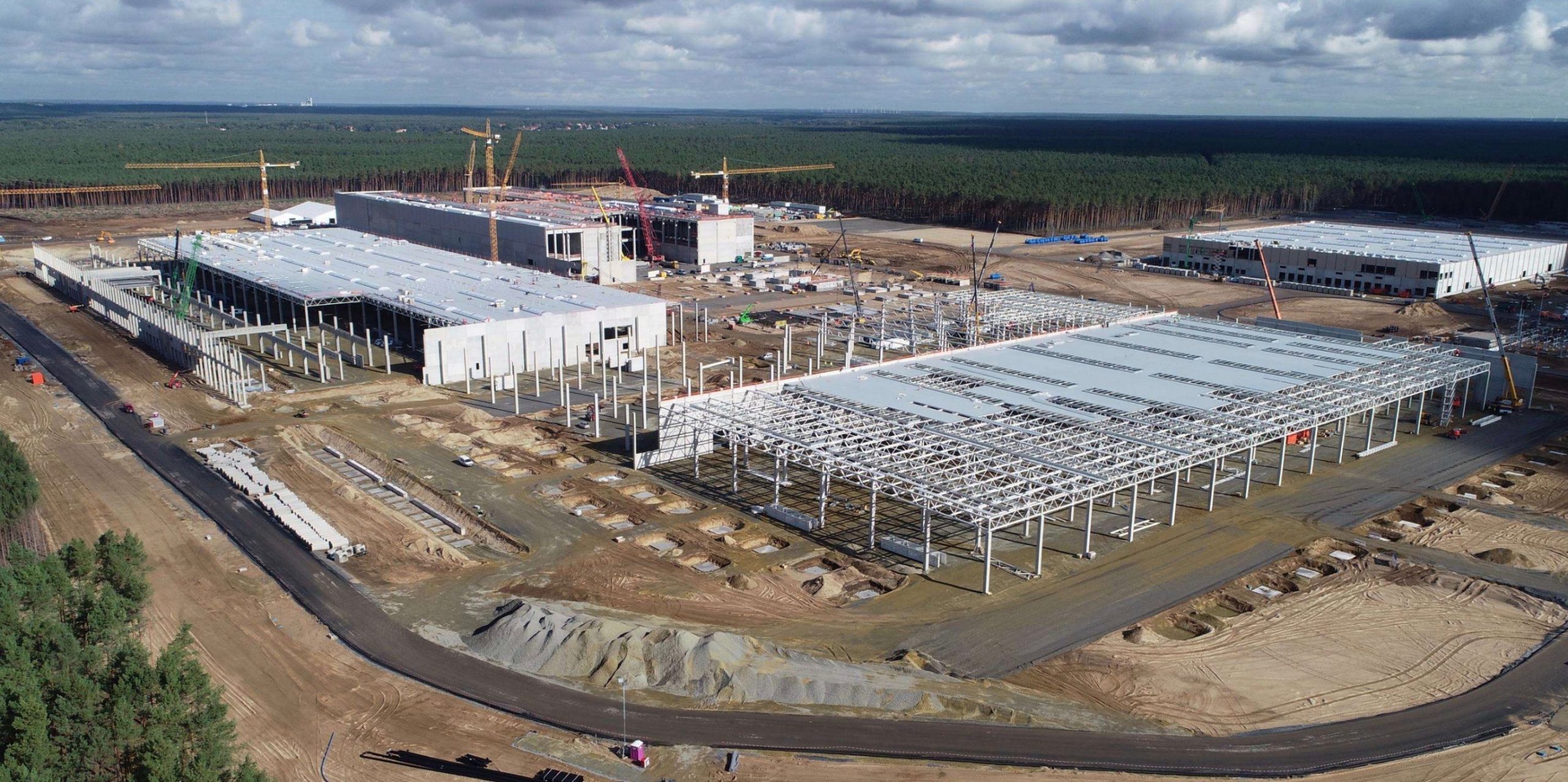
14:36 PT: Elon talks about how Q3 is a record quarter for Tesla. Full Stop. “Q3 was our best quarter in history,” he said. The CEO also discusses Battery Day, the culmination of years’ worth of work by the company. Musk notes that in a few years, batteries could cost half as much with cheaper production costs.
Musk also discusses updates to the rollout of Full Self-Driving. He specifically extends his thanks to the Autopilot team, which has been working like crazy to release the highly-anticipated rewrite. Musk states that the Autopilot rewrite could roll out to more drivers this weekend, with wide release by the end of the year.
14:34 PT: And we’re off! Tesla Investor Relations’ Martin Viecha takes the floor. Just like previous calls, CEO Elon Musk and CFO Zachary Kirkhorn are present, as well as other Tesla executives. Here’s Elon’s opening remarks.
14:32 PT: Then again, Tesla posted $809M GAAP operating income in Q3. That’s more than enough to justify a little delay, I guess.
14:30 PT: And… It’s starting! Here we go, folks… Wait, scratch that. It’s back to classical music.
14:25 PT: I gotta admit, this classical music is getting more and more relaxing by the quarter.
14:20 PT: It is time once more for Tesla’s quarterly earnings report! This makes five consecutive profitable quarters for Tesla now, which is something that definitely did not seem to be on the horizon in early 2019. Back then, it seemed like TSLA was the punching bag of every bear and critic out there. But since Q3 2019, things have changed, a whole lot. Needless to say, this earnings call will definitely be interesting.
Investor's Corner
Tesla could save $2.5B by replacing 10% of staff with Optimus: Morgan Stanley
Jonas assigned each robot a net present value (NPV) of $200,000.

Tesla’s (NASDAQ:TSLA) near-term outlook may be clouded by political controversies and regulatory headwinds, but Morgan Stanley analyst Adam Jonas sees a glimmer of opportunity for the electric vehicle maker.
In a new note, the Morgan Stanley analyst estimated that Tesla could save $2.5 billion by replacing just 10% of its workforce with its Optimus robots, assigning each robot a net present value (NPV) of $200,000.
Morgan Stanley highlights Optimus’ savings potential
Jonas highlighted the potential savings on Tesla’s workforce of 125,665 employees in his note, suggesting that the utilization of Optimus robots could significantly reduce labor costs. The analyst’s note arrived shortly after Tesla reported Q2 2025 deliveries of 384,122 vehicles, which came close to Morgan Stanley’s estimate and slightly under the consensus of 385,086.
“Tesla has 125,665 employees worldwide (year-end 2024). On our calculations, a 10% substitution to humanoid at approximately ($200k NPV/humanoid) could be worth approximately $2.5bn,” Jonas wrote, as noted by Street Insider.
Jonas also issued some caution on Tesla Energy, whose battery storage deployments were flat year over year at 9.6 GWh. Morgan Stanley had expected Tesla Energy to post battery storage deployments of 14 GWh in the second quarter.
Musk’s political ambitions
The backdrop to Jonas’ note included Elon Musk’s involvement in U.S. politics. The Tesla CEO recently floated the idea of launching a new political party, following a poll on X that showed support for the idea. Though a widely circulated FEC filing was labeled false by Musk, the CEO does seem intent on establishing a third political party in the United States.
Jonas cautioned that Musk’s political efforts could divert attention and resources from Tesla’s core operations, adding near-term pressure on TSLA stock. “We believe investors should be prepared for further devotion of resources (financial, time/attention) in the direction of Mr. Musk’s political priorities which may add further near-term pressure to TSLA shares,” Jonas stated.
Investor's Corner
Two Tesla bulls share differing insights on Elon Musk, the Board, and politics
Two noted Tesla bulls have shared differing views on the recent activities of CEO Elon Musk and the company’s leadership.

Two noted Tesla (NASDAQ:TSLA) bulls have shared differing views on the recent activities of CEO Elon Musk and the company’s leadership.
While Wedbush analyst Dan Ives called on Tesla’s board to take concrete steps to ensure Musk remains focused on the EV maker, longtime Tesla supporter Cathie Wood of Ark Invest reaffirmed her confidence in the CEO and the company’s leadership.
Ives warns of distraction risk amid crucial growth phase
In a recent note, Ives stated that Tesla is at a critical point in its history, as the company is transitioning from an EV maker towards an entity that is more focused on autonomous driving and robotics. He then noted that the Board of Directors should “act now” and establish formal boundaries around Musk’s political activities, which could be a headwind on TSLA stock.
Ives laid out a three-point plan that he believes could ensure that the electric vehicle maker is led with proper leadership until the end of the decade. First off, the analyst noted that a new “incentive-driven pay package for Musk as CEO that increases his ownership of Tesla up to ~25% voting power” is necessary. He also stated that the Board should establish clear guidelines for how much time Musk must devote to Tesla operations in order to receive his compensation, and a dedicated oversight committee must be formed to monitor the CEO’s political activities.
Ives, however, highlighted that Tesla should move forward with Musk at its helm. “We urge the Board to act now and move the Tesla story forward with Musk as CEO,” he wrote, reiterating its Outperform rating on Tesla stock and $500 per share price target.
Tesla CEO Elon Musk has responded to Ives’ suggestions with a brief comment on X. “Shut up, Dan,” Musk wrote.
Cathie Wood reiterates trust in Musk and Tesla board
Meanwhile, Ark Investment Management founder Cathie Wood expressed little concern over Musk’s latest controversies. In an interview with Bloomberg Television, Wood said, “We do trust the board and the board’s instincts here and we stay out of politics.” She also noted that Ark has navigated Musk-related headlines since it first invested in Tesla.
Wood also pointed to Musk’s recent move to oversee Tesla’s sales operations in the U.S. and Europe as evidence of his renewed focus in the electric vehicle maker. “When he puts his mind on something, he usually gets the job done,” she said. “So I think he’s much less distracted now than he was, let’s say, in the White House 24/7,” she said.
TSLA stock is down roughly 25% year-to-date but has gained about 19% over the past 12 months, as noted in a StocksTwits report.
Investor's Corner
Cantor Fitzgerald maintains Tesla (TSLA) ‘Overweight’ rating amid Q2 2025 deliveries
Cantor Fitzgerald is holding firm on its bullish stance for the electric vehicle maker.
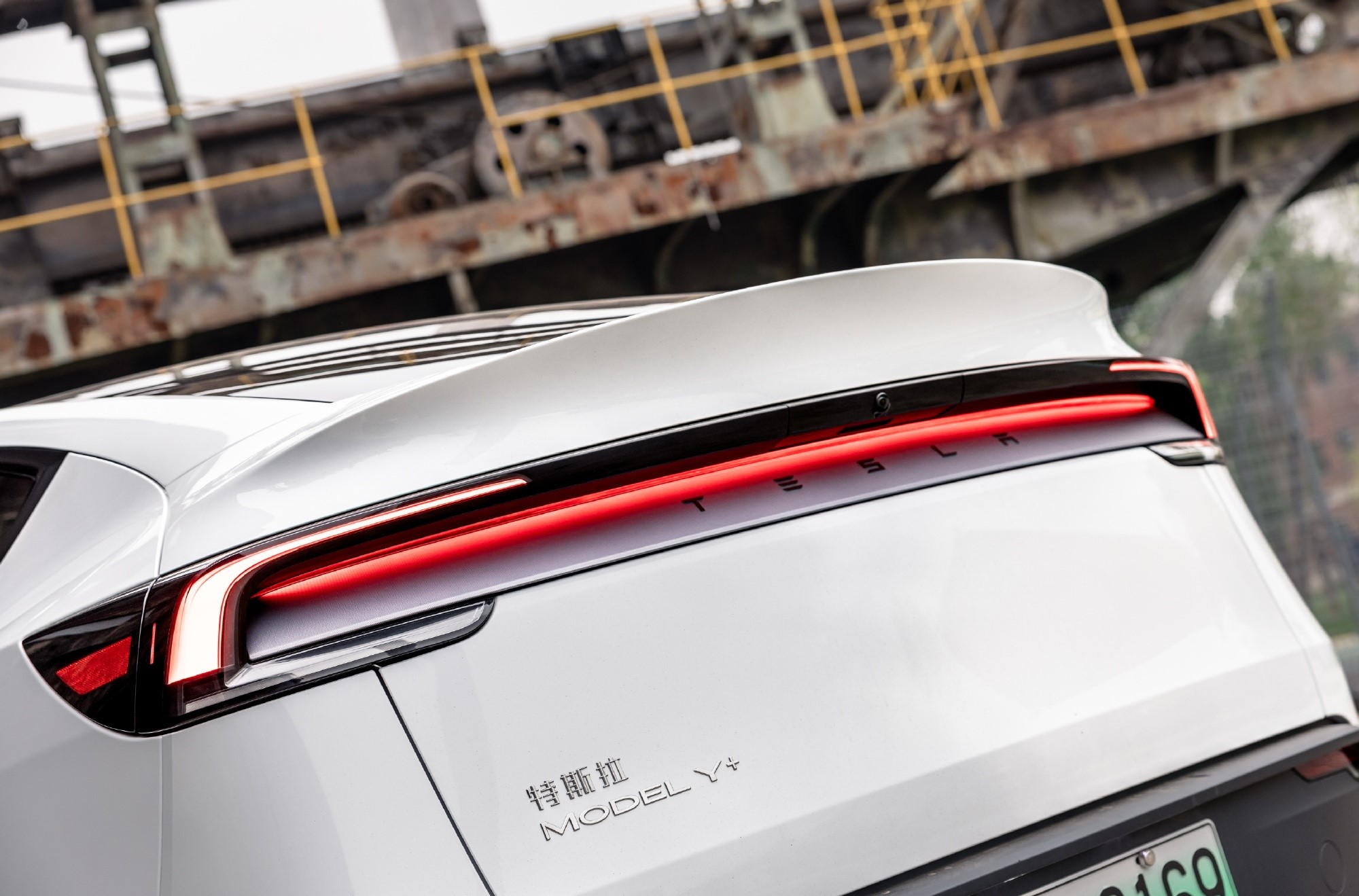
Cantor Fitzgerald is holding firm on its bullish stance for Tesla (NASDAQ: TSLA), reiterating its “Overweight” rating and $355 price target amidst the company’s release of its Q2 2025 vehicle delivery and production report.
Tesla delivered 384,122 vehicles in Q2 2025, falling below last year’s Q2 figure of 443,956 units. Despite softer demand in some countries in Europe and ongoing controversies surrounding CEO Elon Musk, the firm maintained its view that Tesla is a long-term growth story in the EV sector.
Tesla’s Q2 results
Among the 384,122 vehicles that Tesla delivered in the second quarter, 373,728 were Model 3 and Model Y. The remaining 10,394 units were attributed to the Model S, Model X, and Cybertruck. Production was largely flat year-over-year at 410,244 units.
In the energy division, Tesla deployed 9.6 GWh of energy storage in Q2, which was above last year’s 9.4 GWh. Overall, Tesla continues to hold a strong position with $95.7 billion in trailing twelve-month revenue and a 17.7% gross margin, as noted in a report from Investing.com.
Tesla’s stock is still volatile
Tesla’s market cap fell to $941 billion on Monday amid volatility that was likely caused in no small part by CEO Elon Musk’s political posts on X over the weekend. Musk has announced that he is forming the America Party to serve as a third option for voters in the United States, a decision that has earned the ire of U.S. President Donald Trump.
Despite Musk’s controversial nature, some analysts remain bullish on TSLA stock. Apart from Cantor Fitzgerald, Canaccord Genuity also reiterated its “Buy” rating on Tesla shares, with the firm highlighting the company’s positive Q2 vehicle deliveries, which exceeded its expectations by 24,000 units. Cannacord also noted that Tesla remains strong in several markets despite its year-over-year decline in deliveries.
-

 Elon Musk1 week ago
Elon Musk1 week agoTesla investors will be shocked by Jim Cramer’s latest assessment
-

 Elon Musk20 hours ago
Elon Musk20 hours agoxAI launches Grok 4 with new $300/month SuperGrok Heavy subscription
-

 Elon Musk3 days ago
Elon Musk3 days agoElon Musk confirms Grok 4 launch on July 9 with livestream event
-

 News7 days ago
News7 days agoTesla Model 3 ranks as the safest new car in Europe for 2025, per Euro NCAP tests
-

 Elon Musk2 weeks ago
Elon Musk2 weeks agoA Tesla just delivered itself to a customer autonomously, Elon Musk confirms
-

 Elon Musk1 week ago
Elon Musk1 week agoxAI’s Memphis data center receives air permit despite community criticism
-

 Elon Musk2 weeks ago
Elon Musk2 weeks agoTesla’s Omead Afshar, known as Elon Musk’s right-hand man, leaves company: reports
-

 News2 weeks ago
News2 weeks agoXiaomi CEO congratulates Tesla on first FSD delivery: “We have to continue learning!”

